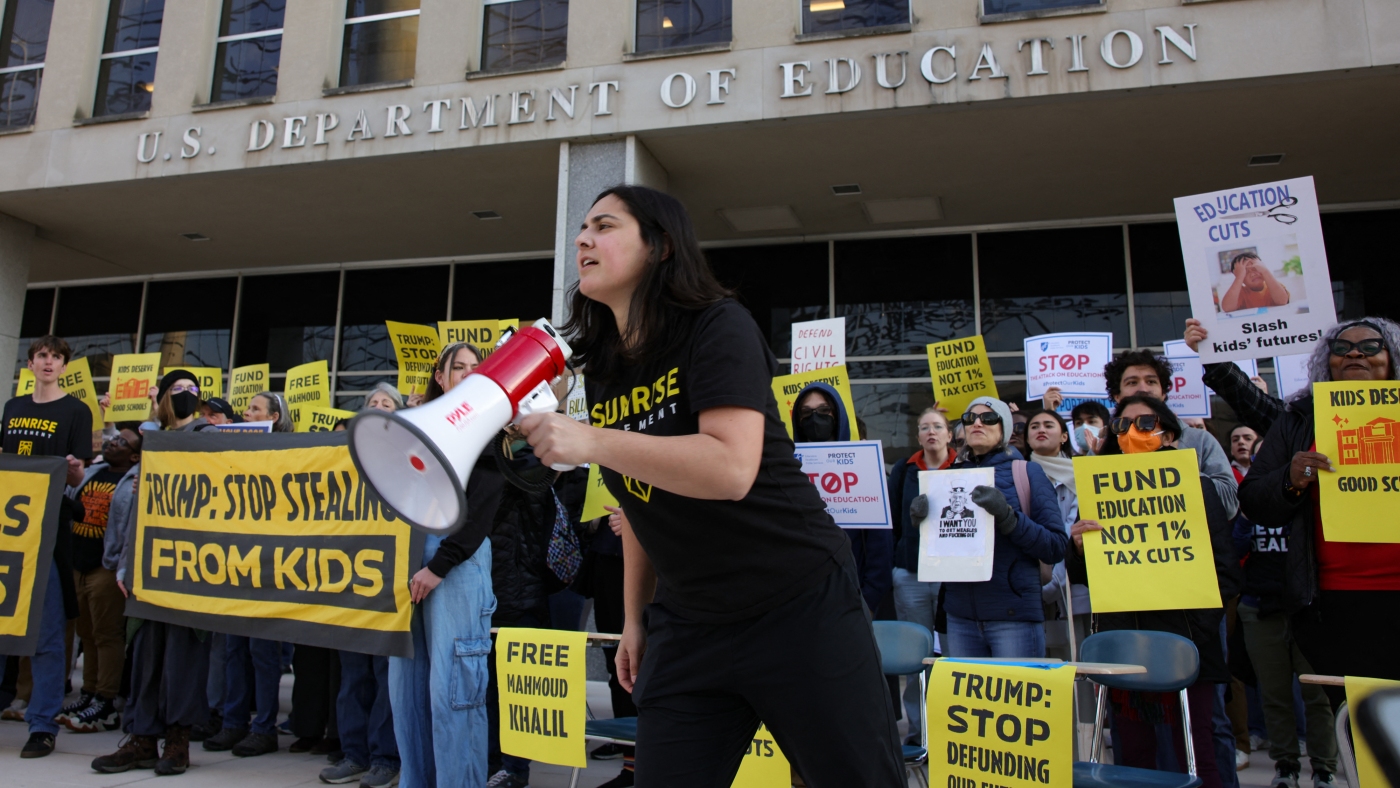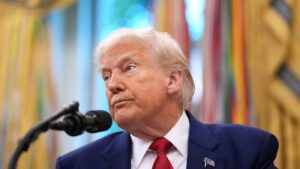Trump’s Executive Order to Dismantle the Department of Education Sparks Debate
In a move that has been anticipated since February, President Trump is poised to sign an executive order that aims to dismantle the Department of Education. This action, which involves transferring educational authority back to states, is set to be announced alongside Republican governors from Texas, Indiana, Florida, and Ohio.
According to a White House fact sheet, Education Secretary Linda McMahon is tasked with facilitating the department’s closure. The order comes after the administration began implementing widespread layoffs within the department, reducing its workforce from 4,133 employees to 2,183.
The layoffs have affected nearly 1,300 workers, with 600 employees resigning or retiring. The signing event was first reported by USA Today.
While the exact text of the executive order has not been released, a draft obtained by NPR suggests McMahon is to act “to the maximum extent appropriate and permitted by law.” Any major changes to the department would require congressional approval, needing 60 votes in the Senate to bypass a Democratic filibuster.
Senator Patty Murray has expressed concern, stating, “What’s the end goal here? Destroying public education in America.” She criticized the administration’s efforts, suggesting they negatively impact students and families.
Trump’s order is expected to face opposition from the public. A recent NPR/PBS News/Marist poll found that 63% of Americans oppose the department’s closure. The administration justifies the action by citing over $3 trillion spent since the department’s inception in 1979 without significant improvements in student achievement.
Evaluating Student Achievement
The administration points to data from The Nation’s Report Card, noting that reading scores have remained stagnant since 1992, while math scores have improved. However, the COVID-19 pandemic has exacerbated learning gaps, which persist five years after schools initially closed.
White House Principal Deputy Press Secretary Harrison Fields remarked, “These scores reveal a national crisis—our children are falling behind.” He stated that Trump’s order aims to empower local entities to improve educational outcomes.
Federal funding contributes a small portion to public schools’ budgets, ranging from 6% to 13% according to a 2018 report. Most funding is sourced from states and local taxes, with federal dollars primarily supporting vulnerable student populations.
During McMahon’s confirmation hearing, she assured senators that the president’s goal is not to cut essential funding but to enhance department efficiency. A senior administration official emphasized that the executive action will maintain essential services and benefits.
The Department of Education does not dictate curriculum or coordinate state and district educational strategies. Recent successes in Alabama and Louisiana, highlighted by the Nation’s Report Card, underscore the influence of state and local initiatives, supported by federal COVID relief funds, in improving educational outcomes.





